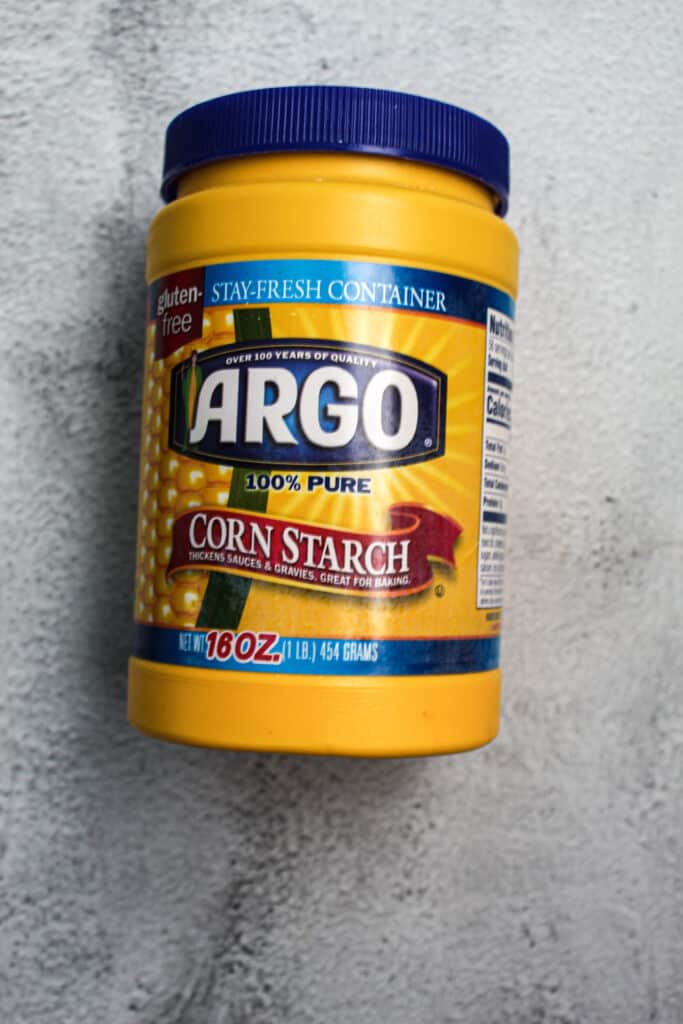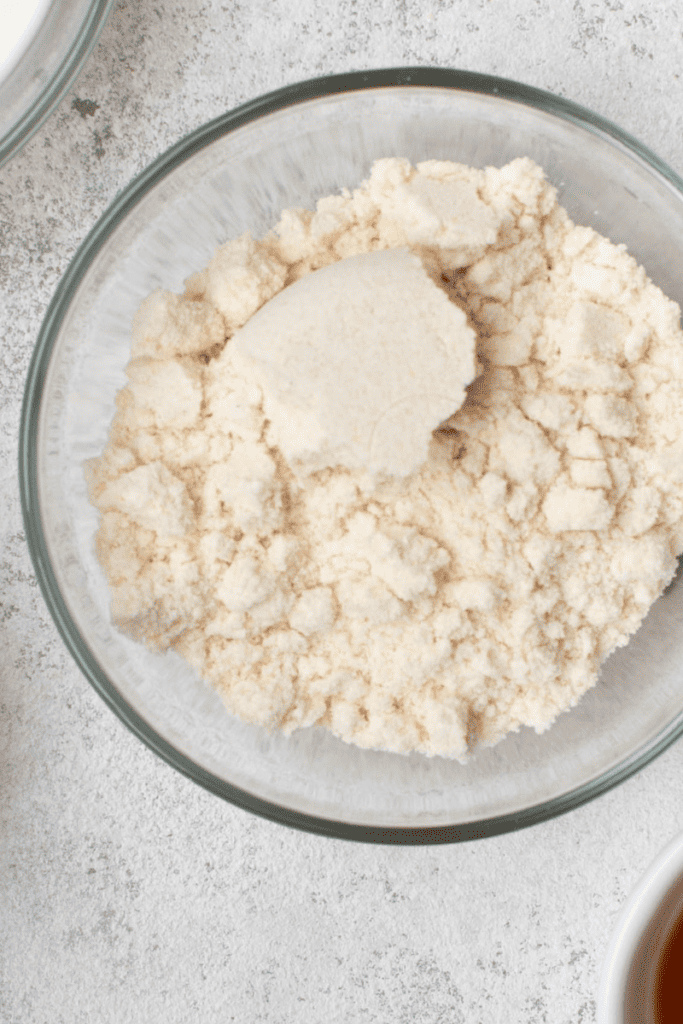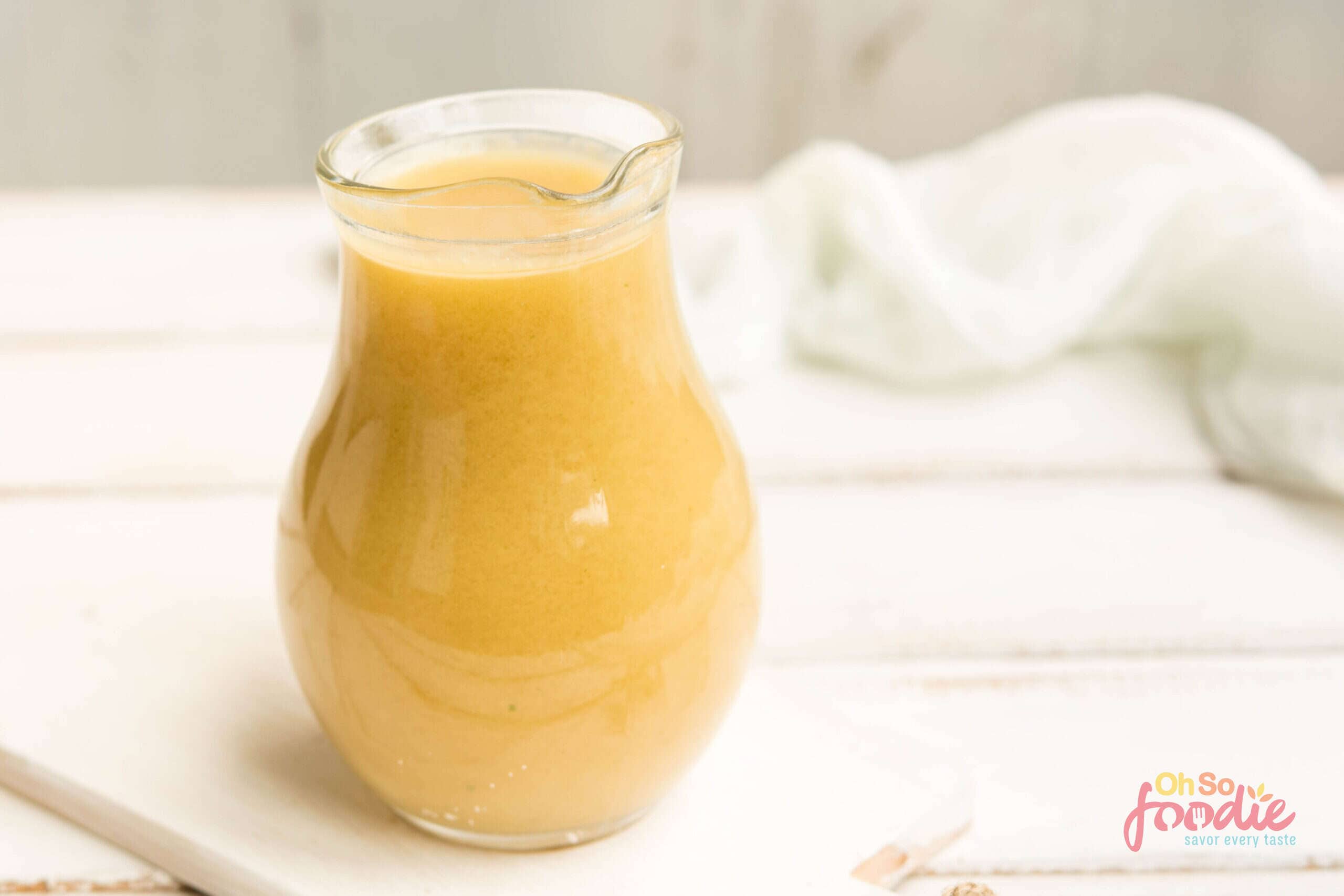Last Updated on September 6, 2023 by Toya
Need to substitute for flour in gravy? Check out these 13 easy flour substitutes for gravy! Not only can you use xanthan gum, cornstarch or even oat flour to make your gravy, but, there are so many other ways to make gravy without flour that still come out tasting so flavorful, smooth and creamy!
Gravy is typically thickened with a mix of flour and butter to create a smooth and creamy texture like no other.
However, if you do not have any flour, do not want to use flour in your gravy recipe or you’re following a keto, low-carb, or gluten-free lifestyle, then these flour substitutes for gravy are worth trying out.

Best substitutes for flour in gravy
The best alternatives for flour in gravy are:
- Cornstarch
- Arrowroot powder
- Potato starch
- Tapioca flour
- Rice flour
- Chickpea flour
- Oat flour
- Coconut flour
- Almond flour
- Cassava flour
- Guar gum
- Xanthan gum
- Pureed vegetables
Each flour substitute for gravy will be discussed in more detail below.

Easy Ways To Substitute For Flour In Gravy
Cornstarch

Cornstarch is a common substitute for flour in gravy that can be used in a 1:1 ratio as a thickening agent.
Cornstarch is great for gravy recipes if you are gluten-free or vegan.
To use cornstarch to thicken a gravy, start by making a slurry. In a bowl, mix 1-2 tablespoons of cornstarch with an equal amount of cold water, creating a smooth paste. Make sure there are no lumps. Next, bring your gravy to a simmer in a saucepan on the stove. Slowly whisk in the cornstarch slurry while continuing to stir the gravy. Keep stirring as the mixture simmers for a few minutes; you’ll notice it thickening. Once it’s thickened to your liking, remove it from the heat and serve over your favorite dishes.
Arrowroot powder
Arrowroot powder can be used in the same way as cornstarch for thickening grvies, with a 1:1 substitution ratio.
To use arrowroot powder to thicken gravy, first, mix 1-2 tablespoons of arrowroot powder with an equal amount of cold water, creating a smooth slurry without any lumps. Set this aside. In a saucepan, heat your gravy over medium heat until it reaches a gentle simmer. Then slowly whisk the arrowroot slurry into the simmering gravy, continuing to whisk to prevent lumps from forming. Allow to simmer for a minute or two, and you’ll notice it thickening. Once the gravy has thickened to your liking, remove it from the heat and serve.
Potato starch
Potato starch is great for thickening gravy and can be used in a 1:1 ratio.
To use potato starch to thicken gravy, begin by mixing 1-2 tablespoons of potato starch with an equal amount of cold water to create a smooth slurry. Ensure there are no lumps. In a saucepan, gently heat your gravy to a simmer over medium heat. Slowly whisk the potato starch slurry into the simmering gravy, stirring continuously to prevent lumps. Let the mixture simmer for a minute or two while it thickens. Once the gravy has reached the desired consistency, remove it from the heat and serve.
Tapioca flour
Tapioca flour or tapioca starch is a great flour alternative for gravy that results in a glossy gravy that tastes so good.
To use tapioca flour for a gravy, start by creating a tapioca flour slurry: In a small bowl, combine 1-2 tablespoons of tapioca flour and equal parts cold water. Stir well to create a smooth paste, ensuring there are no lumps. Add the tapioca slurry slowly into your simmering gravy stirring continuously to prevent lumps. Continue to simmer and stir for a few minutes until the gravy thickens to your desired consistency.
Rice flour
Another great flour substitute for gravy is rice flour…more specifically a rice flour roux. To make this roux, you will need equal parts rice flour and butter – for most gravy recipes 2 tablespoons of each will work just fine.
Grab a saucepan and melt the butter over medium heat. Then sprinkle the rice flour evenly over the melted butter and stir continuously. Cook the mixture, stirring frequently, for 2-3 minutes. This will help remove the raw taste from the rice flour.
Use this roux to make your gravy.
A rice flour roux can produce a smooth and silky gravy, and it’s an excellent option for those who need a flour substitute.
Chickpea flour
Chickpea flour can also be used as a gluten-free alternative to thicken gravy. You’ll need to make a roux. Typically, most recipes call for 2 tablespoons of butter and 2 tablespoons of chickpea flour to make this roux.
Grab a saucepan and melt the butter over medium heat. Sprinkle the chickpea flour evenly over the melted butter and stir continuously. Cook this roux for 3 minutes to remove the taste of the raw chickpea flour.
Use this chickpea four roux to make a thick gravy.
Note that chickpea flour can produce a slightly nutty and savory flavor in a gravy recipe.
Oat flour
Oat flour is another gluten-free flour substitute for thickening gravy. Use it in a 1:1 ratio.
Coconut flour

If you’re following a keto or gluten-free diet, then you can use coconut flour as a regular flour substitute for gravy. You can use coconut flour in a 1:1 ratio with flour.
Almond flour
Have some almond flour on hand? You can use it in a 1:1 ratio as a gluten-free alternative for thickening gravy.
Cassava flour
Cassava flour is a grain-free option and can be used in a 1:1 ratio as a thickener. You’ll first need a roux. If you don’t know how to make one, you can check out how to make a cassava flour roux for gravies here.
Guar gum
Guar gum is great not only for thickening gravies but also for soups, ice creams, sauces, dressings, and more. To use guar gum to thicken up a gravy simply sprinkle 1 – 2 teaspoons into your simmering gravy and let it thicken up! The best ratio of guar gum to liquid is 1 – 2 teaspoons for every cup of liquid.
Xanthan gum
Got access to some anthan um? It’ll make the perfect substitute for flour in gravy, specially if you’re following keto. Simply sprinkle a ½ – 1 teaspoon of xanthan gum into your gravy, mix well and let the sauce simmer and thicken up. You can check out this easy gravy with xanthn gum recipe here to see exactly how this is done.
Pureed vegetables
Lastly, you can thicken gravy by pureeing vegetables like potatoes, carrots, or cauliflower and adding the puree to the gravy until it reaches your desired thickness.
When using these easy flour substitutes for a gravy, keep in mind that the texture and flavor of your gravy may be altered compared to the flavor of a traditional flour-based gravy. Additionally, some of these options may require different cooking techniques, so it’s a good idea to follow a specific recipe that uses the respective flour substitute for gravy for more guidance.
